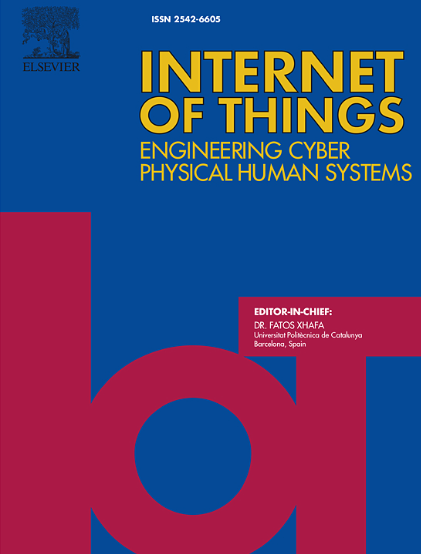反馈驱动的脑类器官平台可实现自动化维护和高分辨率神经活动监测
IF 7.6
3区 计算机科学
Q1 COMPUTER SCIENCE, INFORMATION SYSTEMS
引用次数: 0
摘要
组织培养的分析需要多种监测和测量技术的复杂集成和协调。我们开发了一个自动化的研究平台,使独立的设备能够实现反馈驱动细胞培养研究的协作目标。我们的方法能够在物联网(IoT)架构中实现各种传感和驱动设备之间的连续、交流、非侵入性交互,实现对体外生物实验的精确定时控制。该框架集成了微流体、电生理学和成像设备,以维持大脑皮层类器官,同时测量它们的神经元活动。类器官在固定在商业微电极阵列上的定制的3d打印室中培养。使用可编程微流体泵实现周期性进料。我们开发了一种计算机视觉流体体积估计器,用于在介质喂入/吸入周期中校正微流体灌注的偏差。我们通过一组为期7天的小鼠大脑皮质类器官研究验证了该系统,比较了手动和自动方案。结果表明,在整个实验过程中,自动协议保持了强大的神经活动,同时在实验期间进行了每小时的电生理记录。每个样本的神经单元的中位数放电率增加,并且通过高频记录揭示了类器官放电率的动态模式。令人惊讶的是,喂食并不影响射击速度。此外,记录过程中的介质交换没有显示出对发射速率的急性影响,因此可以使用该自动化平台进行试剂筛选研究。本文章由计算机程序翻译,如有差异,请以英文原文为准。

A feedback-driven brain organoid platform enables automated maintenance and high-resolution neural activity monitoring
The analysis of tissue cultures requires a sophisticated integration and coordination of multiple technologies for monitoring and measuring. We have developed an automated research platform enabling independent devices to achieve collaborative objectives for feedback-driven cell culture studies. Our approach enables continuous, communicative, non-invasive interactions within an Internet of Things (IoT) architecture among various sensing and actuation devices, achieving precisely timed control of in vitro biological experiments. The framework integrates microfluidics, electrophysiology, and imaging devices to maintain cerebral cortex organoids while measuring their neuronal activity. The organoids are cultured in custom, 3D-printed chambers affixed to commercial microelectrode arrays. Periodic feeding is achieved using programmable microfluidic pumps. We developed a computer vision fluid volume estimator used as feedback to rectify deviations in microfluidic perfusion during media feeding/aspiration cycles. We validated the system with a set of 7-day studies of mouse cerebral cortex organoids, comparing manual and automated protocols. It was shown that the automated protocols maintained robust neural activity throughout the experiment while enabling hourly electrophysiology recordings during the experiments. The median firing rates of neural units increased for each sample, and dynamic patterns of organoid firing rates were revealed by high-frequency recordings. Surprisingly, feeding did not affect the firing rate. Furthermore, media exchange during a recording did not show acute effects on firing rate, enabling the use of this automated platform for reagent screening studies.
求助全文
通过发布文献求助,成功后即可免费获取论文全文。
去求助
来源期刊

Internet of Things
Multiple-
CiteScore
3.60
自引率
5.10%
发文量
115
审稿时长
37 days
期刊介绍:
Internet of Things; Engineering Cyber Physical Human Systems is a comprehensive journal encouraging cross collaboration between researchers, engineers and practitioners in the field of IoT & Cyber Physical Human Systems. The journal offers a unique platform to exchange scientific information on the entire breadth of technology, science, and societal applications of the IoT.
The journal will place a high priority on timely publication, and provide a home for high quality.
Furthermore, IOT is interested in publishing topical Special Issues on any aspect of IOT.
 求助内容:
求助内容: 应助结果提醒方式:
应助结果提醒方式:


